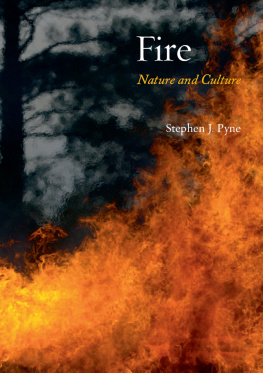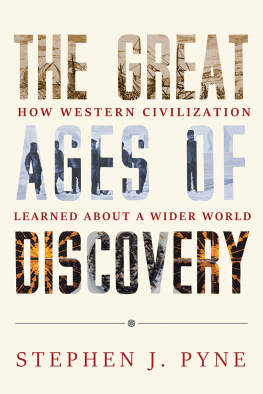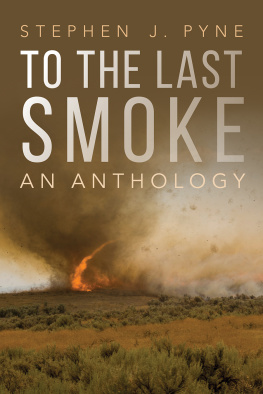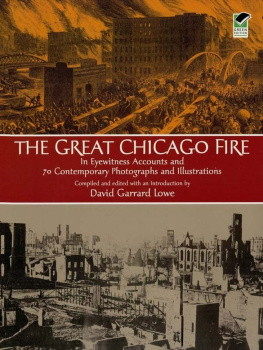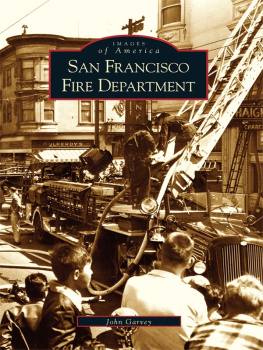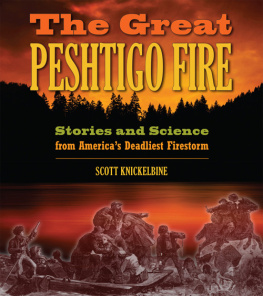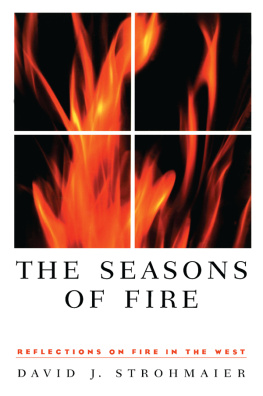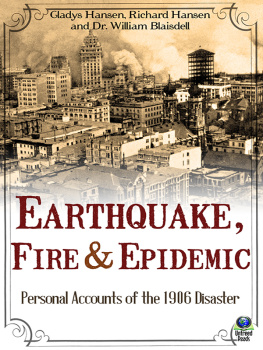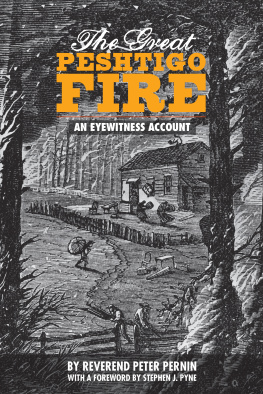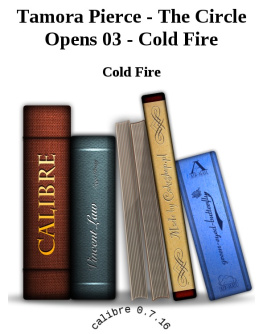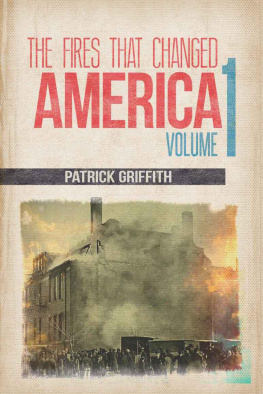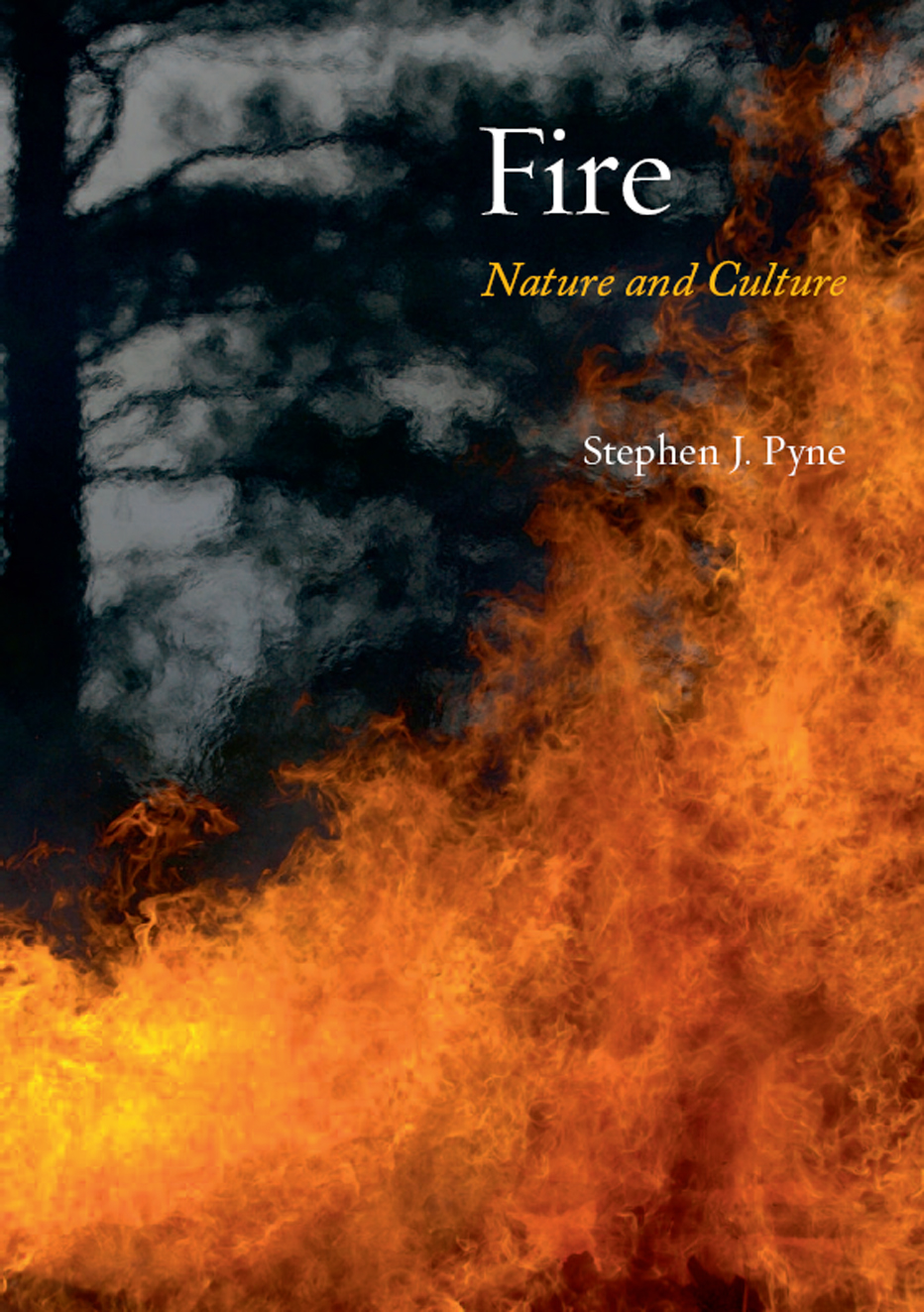Stephen J. Pyne - Fire: Nature and Culture
Here you can read online Stephen J. Pyne - Fire: Nature and Culture full text of the book (entire story) in english for free. Download pdf and epub, get meaning, cover and reviews about this ebook. year: 2013, publisher: Reaktion Books, genre: Politics. Description of the work, (preface) as well as reviews are available. Best literature library LitArk.com created for fans of good reading and offers a wide selection of genres:
Romance novel
Science fiction
Adventure
Detective
Science
History
Home and family
Prose
Art
Politics
Computer
Non-fiction
Religion
Business
Children
Humor
Choose a favorite category and find really read worthwhile books. Enjoy immersion in the world of imagination, feel the emotions of the characters or learn something new for yourself, make an fascinating discovery.
- Book:Fire: Nature and Culture
- Author:
- Publisher:Reaktion Books
- Genre:
- Year:2013
- Rating:5 / 5
- Favourites:Add to favourites
- Your mark:
Fire: Nature and Culture: summary, description and annotation
We offer to read an annotation, description, summary or preface (depends on what the author of the book "Fire: Nature and Culture" wrote himself). If you haven't found the necessary information about the book — write in the comments, we will try to find it.
For over 400 million years, fire has been an integral force on our planet. It can be as innocent as a bonfire or as destructive and lethal as a wildfire. Human history is rife with fires that have leveled citiesthe Fire of Moscow in 1812 that destroyed seventy-five percent of the city, the Great Chicago Fire in 1871 that took down 17,000 buildings, and the fire that obliterated San Francisco after the 1906 earthquake are just a few. Fire is a force of nature that can consume everything in its wake, and yet it also has tremendous powers of cleansing and renewal. At the end of the day, we cant live without it.
In Fire, Stephen J. Pyne offers a concise history of fire and its use by humanity, explaining how fire has been at the core of hunting, foraging, farming, herding, urbanizing, and managing nature reserves. He depicts how it gave humans power in ancient times, which resulted in humanity beginning to reshape the world for its own benefit. He describes how fire was used by aboriginal societies and the ways agricultural societies added control over fuel, but warns that our mastery of the science and art of fire has not given us complete controlfire disasters throughout history have defined cultures, and unexpected fires that begin as the result of other disasters have shocking effects. Pyne traces fires influence on landscapes, art, science, and even climate, exploring the power a simple spark has over our imaginations.
Lavishly illustrated with a host of rare and unexpected images, Fire is a sizzling and accessible tale of our relationship with this primal natural force.
Stephen J. Pyne: author's other books
Who wrote Fire: Nature and Culture? Find out the surname, the name of the author of the book and a list of all author's works by series.

